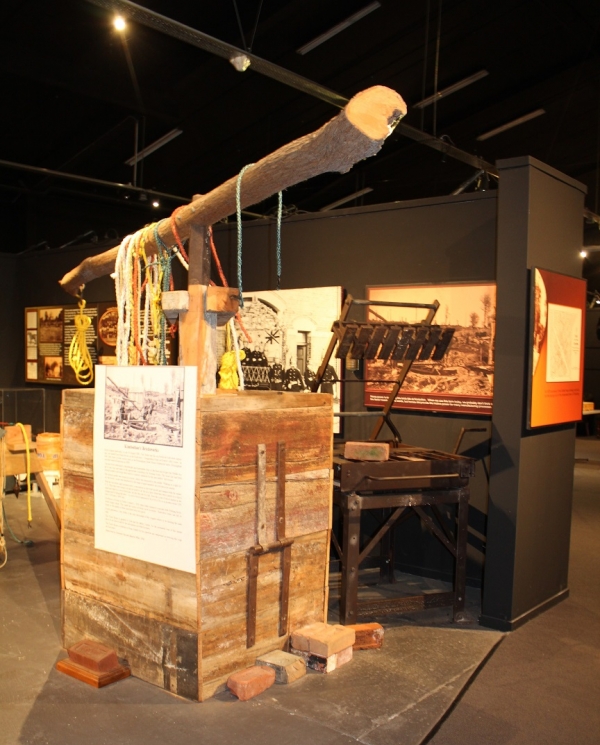The restored horse-driven clay mixer from Kimbolton.

This paddle auger to mix clay and water to the right consistency to form bricks at Kimbolton in the late 1800s to early 1900s has been re-created at the Coach House Museum.
This auger had its origins with early settler farmers Carl Gerke and his son Frederick, who each won adjoining 100 acre farm blocks in the Rangiwahia Road original land ballot on 14 August 1886. As well, they each drew a house section in the Birmingham Small Farmers Settlement ballot. Birmingham was renamed Kimbolton in 1898.
The Gerkes established a wheelwright and blacksmith’s shop on their farm and forged this paddle auger to make bricks from the local clay. The bricks were used to construct chimneys in new settler homes.
The horse-driven clay mixer turned clay and water into bricks.

The vertical paddle was turned by a horse, harnessed to a paddle. Walking in a tight circle the horse’s power was transferred to the auger at about one revolution a minute.
The brick moulds in which the clay mixture formed bricks.

With the clay at the right moisture level it was placed in the brick mould and stamped with the initials ‘F.G.’ Then they were turned out and set aside to air dry in the shed. Next they were placed on a tripod stand and baked in a wood-fired kiln, set into the side of a hill.
Production at Gerkes stopped around 1910 when better transport coincided with Feilding brickworks larger output, making the latter more economic.
Kimbolton bricks can still be found, so their quality must have been good.
An early local brick inscribed 'J White Fielding - NZ'

The Coach House is grateful to fourth generation John Gerke and his father Laurie for the permanent loan of the unique piece of our local history and the information provided by them.
The Coach House is also indebted to Brian Schnell for his expertise and enthusiasm in restoring this original clay mixer.